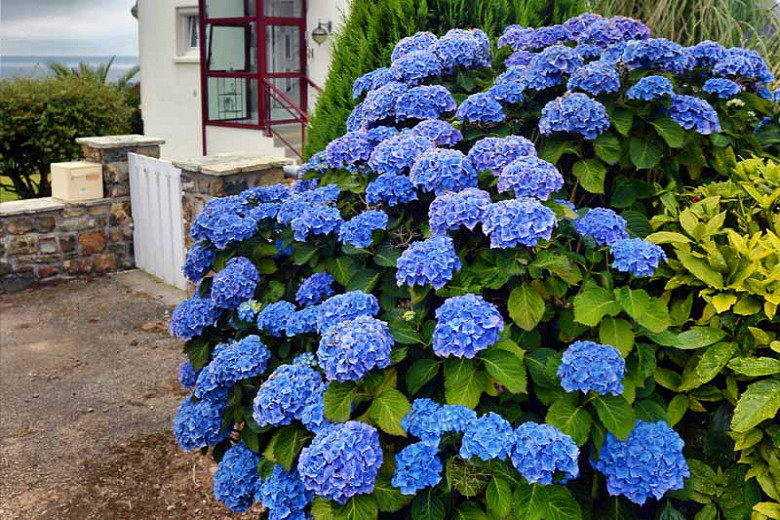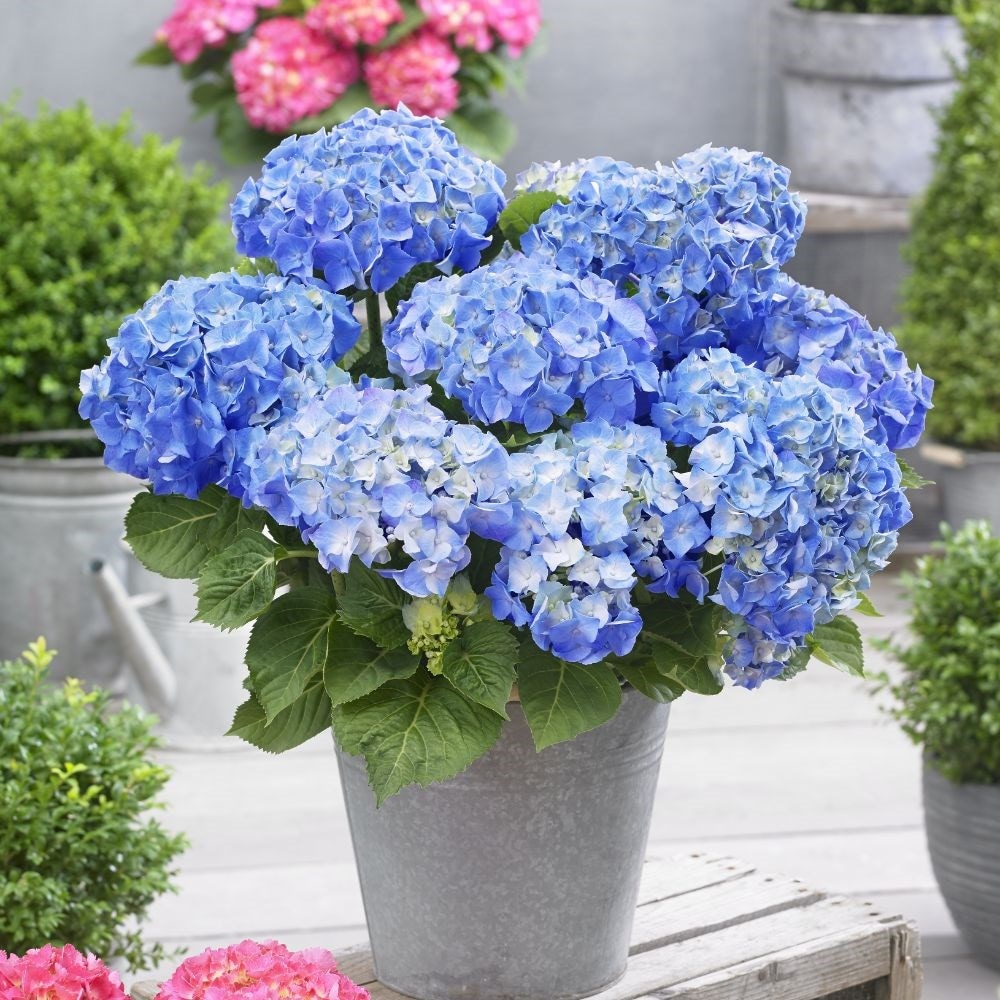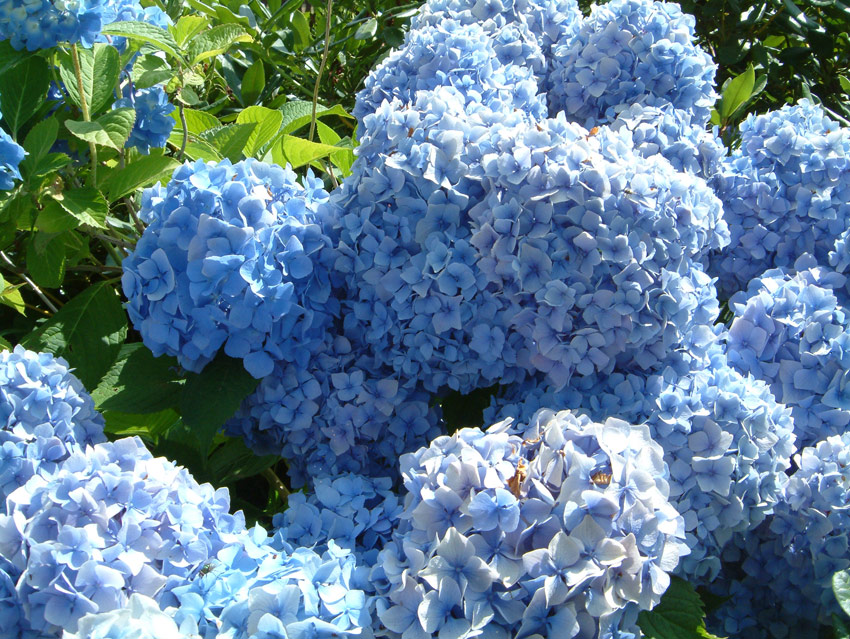How To Grow And Care For Hydrangea Macrophylla Blue Shrubs
How to Grow and Care for Hydrangea Macrophylla Blue Shrubs
Hydrangea macrophylla blue shrubs are a beautiful and popular addition to any garden. With their large, showy flowers, they can add a touch of elegance and color to any landscape. However, hydrangeas can be a bit tricky to care for, especially if you live in a cold climate.
This blog post will provide you with all the information you need to grow and care for hydrangea macrophylla blue shrubs. We'll cover everything from choosing the right location to watering and fertilizing. By following these tips, you can ensure that your hydrangeas will thrive for many years to come.
Choosing the right location
The first step to growing hydrangea macrophylla blue shrubs is to choose the right location. Hydrangeas prefer partial shade, meaning they should receive about 4-6 hours of sunlight per day. Too much sun can scorch their leaves, while too little sun can lead to weak growth and small flowers.
The soil should also be moist and well-drained. Hydrangeas do not like to sit in water, so make sure the soil has good drainage. If you have sandy soil, you may need to add some compost or peat moss to improve drainage.
Planting
Once you have chosen the right location, it's time to plant your hydrangea macrophylla blue shrubs. Dig a hole that is twice as wide and as deep as the root ball of the plant. Add some compost or peat moss to the bottom of the hole, and then place the plant in the hole. Backfill the hole with soil, and water the plant thoroughly.
Watering
Hydrangeas need to be watered regularly, especially during the first year after planting. Water the plants deeply, so that the water reaches the roots. In most cases, you will need to water your hydrangeas once a week. However, if it is hot and dry, you may need to water them more often.
Fertilizing
Hydrangeas also need to be fertilized regularly. You can use a balanced fertilizer, such as a 10-10-10 fertilizer, once a month during the growing season. In the fall, you can apply a fertilizer that is high in phosphorus, such as a 5-10-10 fertilizer.
Pruning
Hydrangea macrophylla blue shrubs do not need to be pruned heavily. However, you should remove any dead, diseased, or damaged branches in the spring. You can also prune the plants to shape them or to control their size. If you want to encourage more flowers, you can prune the plants in the fall.
Winter care
If you live in a cold climate, you will need to take some steps to protect your hydrangea macrophylla blue shrubs from the winter weather. In the fall, mulch the plants with several inches of organic matter, such as straw or leaves. You may also need to cover the plants with a burlap sack or other protective material.
Troubleshooting
If your hydrangea macrophylla blue shrubs are not thriving, there are a few things you can check. Make sure the plants are getting the right amount of sunlight and water. You may also need to fertilize them more often. If the leaves are turning brown, it could be a sign of a nutrient deficiency. You can test the soil to see if it is lacking in any nutrients.
With proper care, hydrangea macrophylla blue shrubs can thrive for many years to come. These beautiful shrubs will add a touch of elegance and color to any garden.
If you're looking for a beautiful and easy-to-care-for shrub that will add a touch of elegance to your garden, then you might want to consider the hydrangea macrophylla blue. This deciduous shrub is native to Japan and Korea, and it produces large, mophead flowers in shades of blue, pink, or white. The color of the flowers depends on the acidity of the soil, so if you want to get the deepest blue blooms, you'll need to plant your hydrangea in acidic soil.
Hydrangea macrophylla blue is a relatively low-maintenance plant. It prefers full sun or partial shade, and it needs moist, well-drained soil. You should fertilize your hydrangea in the spring and summer, and you should deadhead the flowers in the fall. With proper care, your hydrangea macrophylla blue should bloom for many years to come.
If you're interested in learning more about hydrangea macrophylla blue, I recommend visiting . This website has a wealth of information on this beautiful flower, including its history, care, and cultivation. You can also find photos and illustrations of hydrangea macrophylla blue, as well as tips on how to grow it in your own garden.
FAQ of hydrangea macrophylla blue
- What are the best growing conditions for hydrangea macrophylla blue?
Hydrangea macrophylla blue prefers moist but well-drained soil in full sun to partial shade. It is important to protect the plant from cold, drying winds. To promote fresh, new, vigorous growth on established plants, cut back hard in early spring.
- What do blue hydrangeas need to bloom blue?
The color of hydrangea blooms is affected by the acidity of the soil. In acidic soil (pH 5.5 or lower), hydrangeas will bloom blue. In neutral to alkaline soils (pH 6.5 and higher), hydrangeas will bloom pink. To get blue hydrangeas to bloom blue, you can add aluminum sulfate to the soil.
- How do I care for hydrangea macrophylla blue during the winter?
In areas with cold winters, hydrangea macrophylla blue may need to be protected from frost. You can do this by covering the plant with a burlap sack or other protective material. In very cold areas, you may need to bring the plant indoors for the winter.
- How do I propagate hydrangea macrophylla blue?
Hydrangea macrophylla blue can be propagated by taking cuttings in the spring or summer. To take a cutting, choose a healthy stem that is about 6 inches long. Remove the bottom leaves from the cutting and dip the end in rooting hormone. Plant the cutting in a pot of well-draining soil and keep the soil moist. The cutting should root in about 4-6 weeks.
- What are some common pests and diseases that affect hydrangea macrophylla blue?
Hydrangea macrophylla blue is susceptible to a few common pests and diseases, including aphids, scale, powdery mildew, and leaf spot. Aphids can be controlled by using insecticidal soap or neem oil. Scale can be controlled by using horticultural oil or insecticidal soap. Powdery mildew can be controlled by using a fungicide. Leaf spot can be controlled by removing affected leaves and using a fungicide.
Image of hydrangea macrophylla blue
5 different images of "hydrangea macrophylla blue" from Pinterest:
- A large bush of hydrangea macrophylla with blue blooms in full bloom.

- A close-up of a single hydrangea macrophylla bloom with blue petals and a white center.

- A row of hydrangea macrophylla bushes with blue blooms lining a walkway.

- A hydrangea macrophylla bush with blue blooms in a pot on a patio.

- A bouquet of hydrangea macrophylla blooms with blue petals.

Post a Comment for "How To Grow And Care For Hydrangea Macrophylla Blue Shrubs"